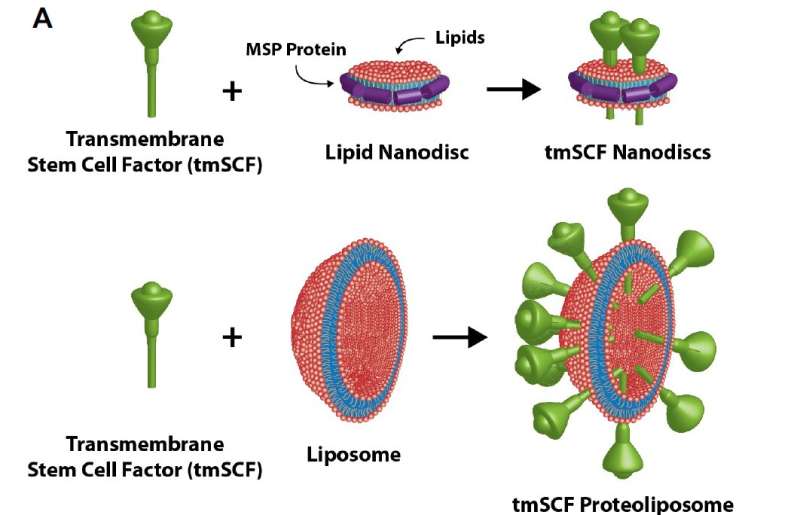cochrane review diclofenac

Several years ago, a promising therapeutic using stem cell factor (SCF) emerged that could potentially treat a variety of ailments, such as ischemia, heart attack, how much does colcrys cost without insurance stroke and radiation exposure. However, during clinical trials, numerous patients suffered severe allergic reactions and development of SCF-based therapeutics stopped.
A research team led by engineers at The University of Texas at Austin has developed a related therapeutic that they say avoids these major allergic reactions while maintaining its therapeutic activity. The keys to the discovery, published recently in Nature Communications, were the use of a similar, membrane-bound version of SCF delivered in engineered lipid nanocarriers.
“We envision this as something you can inject where you have lack of blood flow and it could induce blood vessels to grow in that area,” said Aaron Baker, a professor in the Cockrell School of Engineering’s Department of Biomedical Engineering, and one of the leaders on the project.
Stem cell factor is a cytokine, a type of soluble protein that can stimulate regeneration in the body and growth of stem cells. Its ability to help stem cells grow, especially in critical places like bone marrow, makes it very promising for many therapeutic applications. But when delivered to the body in clinical trials related to strokes, it caused mast cell growth, which activated the immune system’s defenses and led to the allergic reactions.
The new therapeutic uses transmembrane stem cell factor, a version of the cytokine that tethered to a cell membrane. In the body, the transmembrane form can be cleaved off into to the soluble form, which travels around the body.
“We found this transmembrane stem cell factor has all the necessary therapeutic properties and without activating the immune system and causing allergic reaction,” said Eri Takematsu, a former member of Baker’s lab who is now a postdoctoral researcher at Stanford and was the first author on the paper.
The big problem with the transmembrane SCF is that, because it’s not soluble, it tends to just clump together in solution. So, the team developed lipid nanocarriers to help it say in solution and to tailor its activity towards different cell type. They looked specifically at using a liposomes (lipid bubbles) and lipid nanodiscs as carriers for transmembrane SCF.
“This type of nanodisc is something people haven’t explored very much developing therapeutics before,” Baker said. “It makes a little island of lipid around the transmembrane SC and holds it together with a ring of proteins, kind of like a lariat.”
Source: Read Full Article
